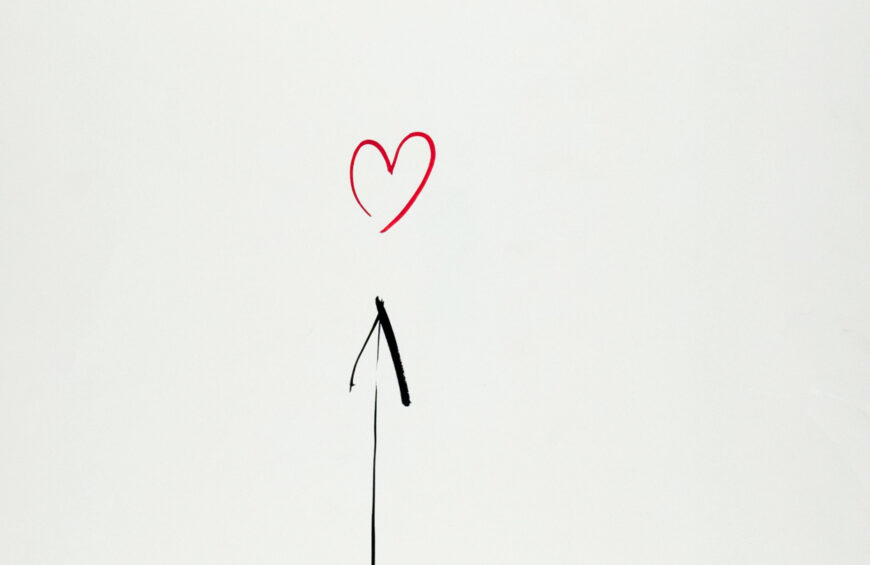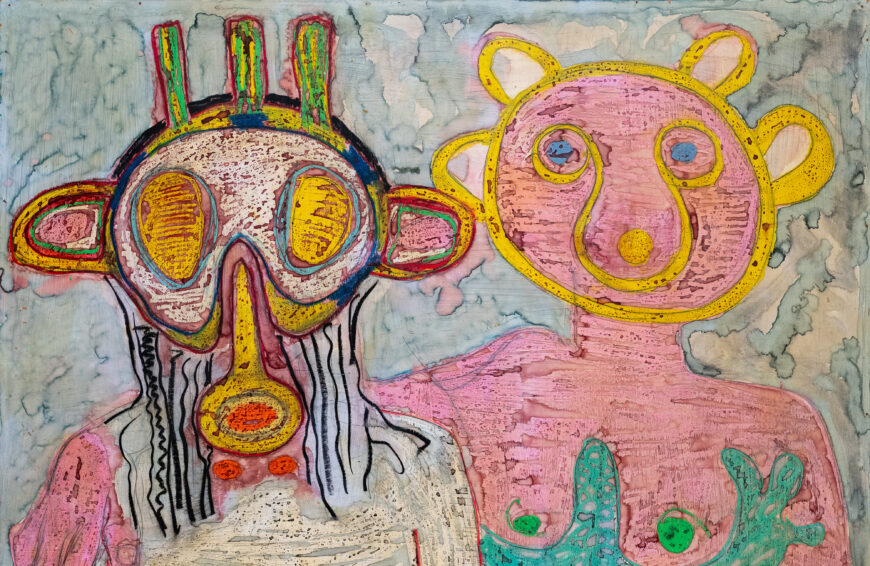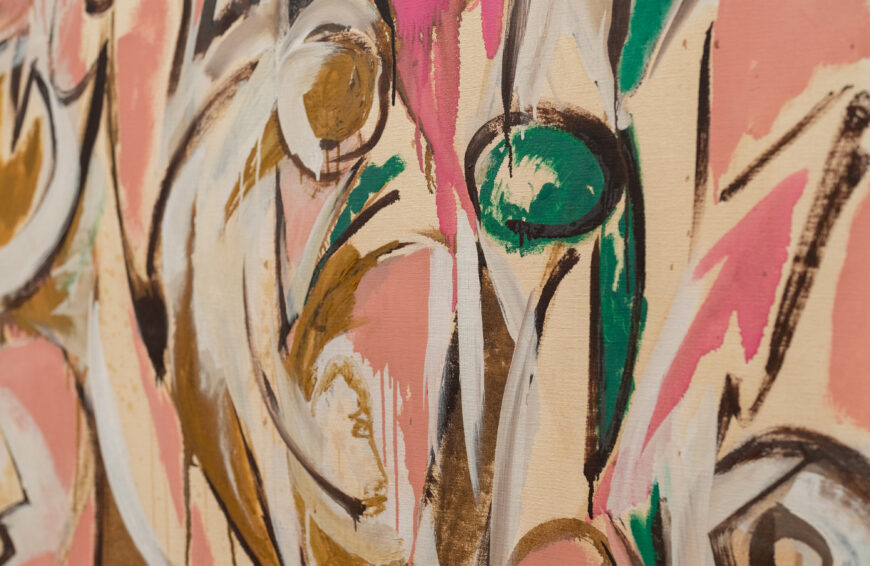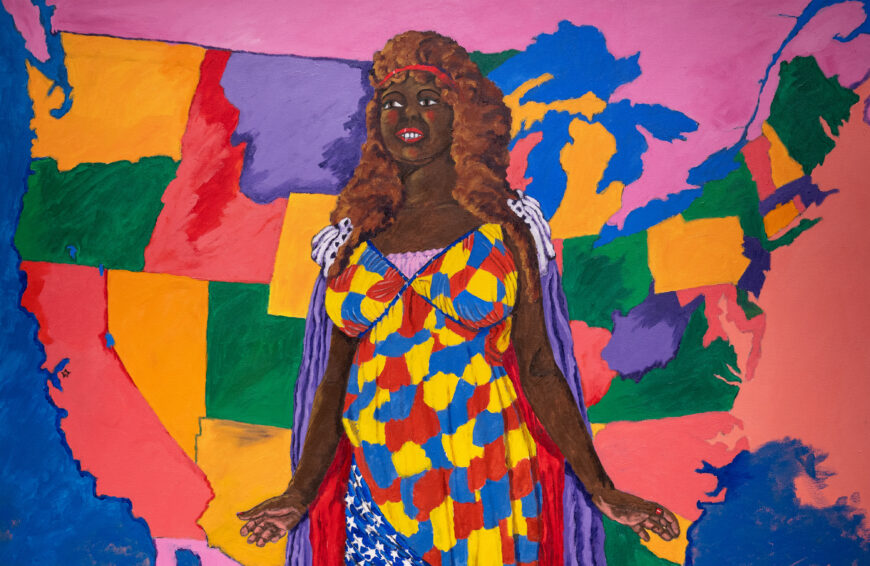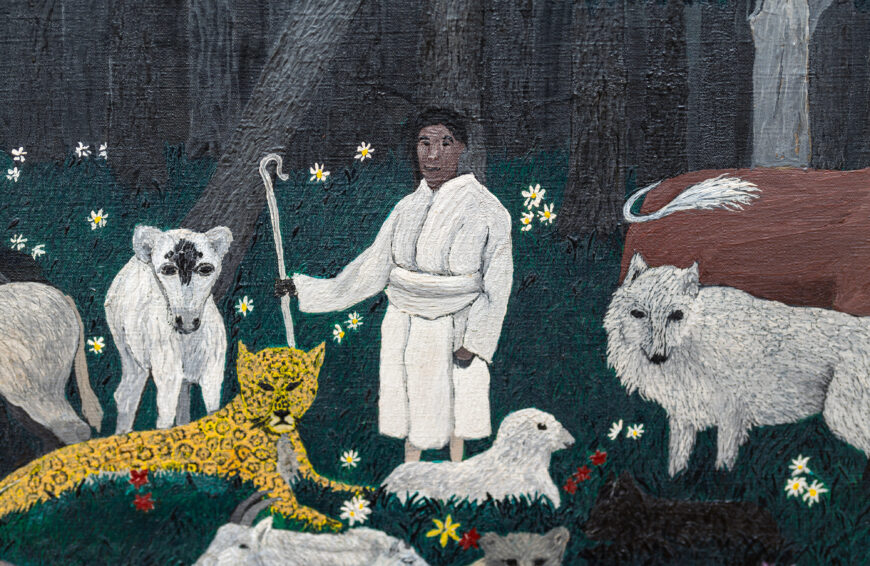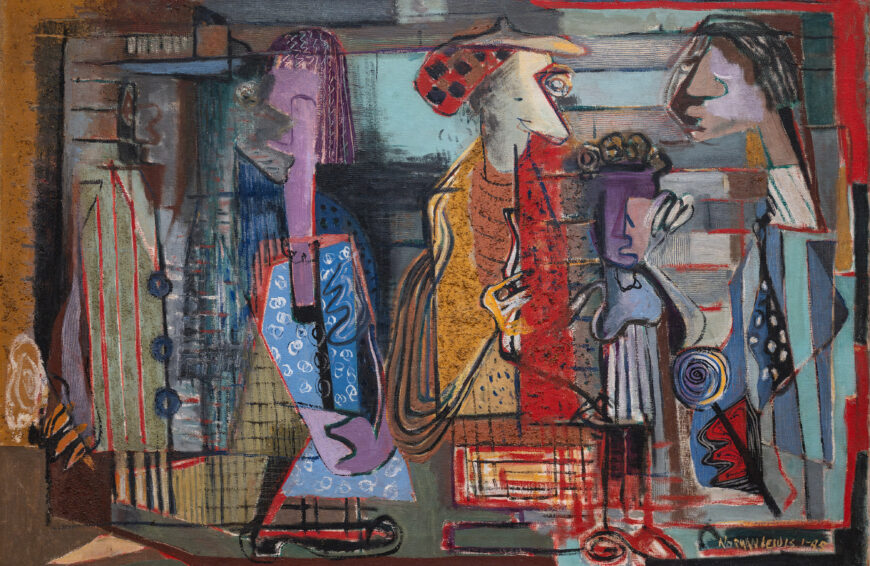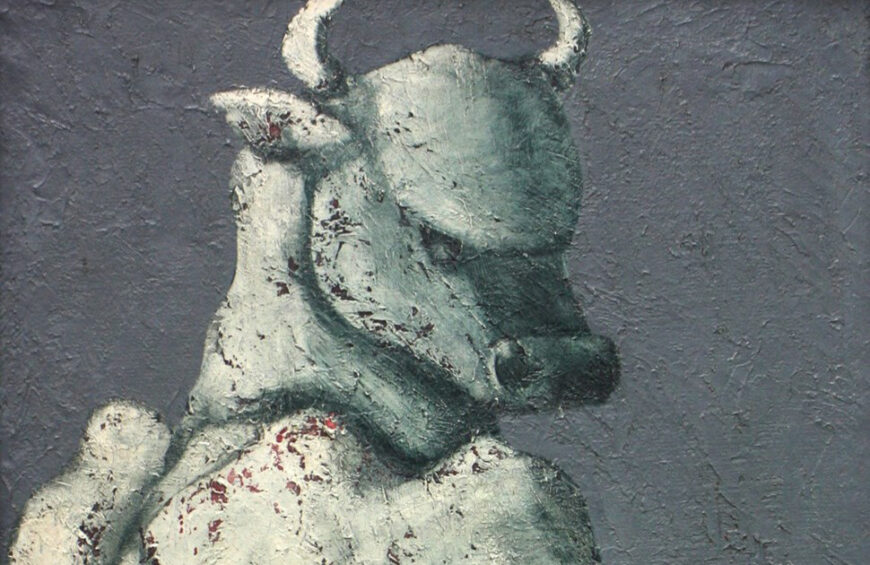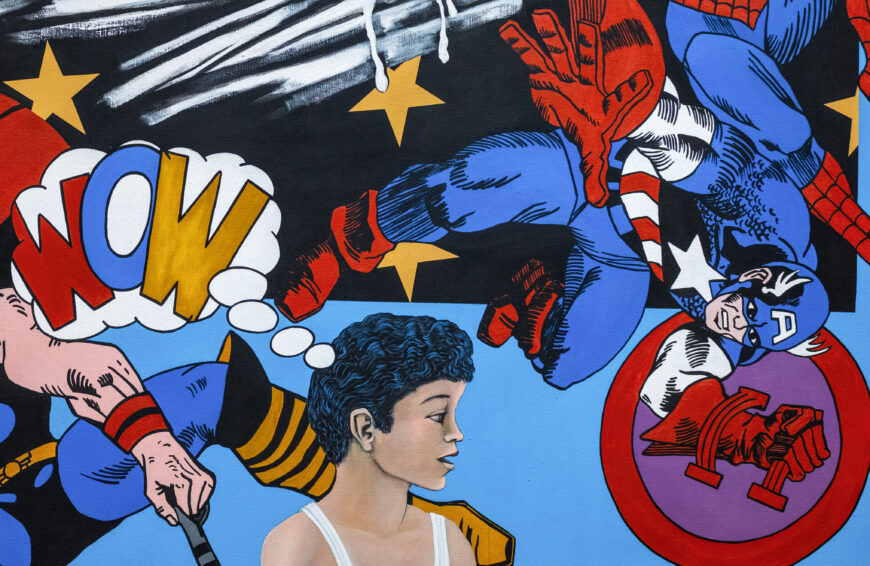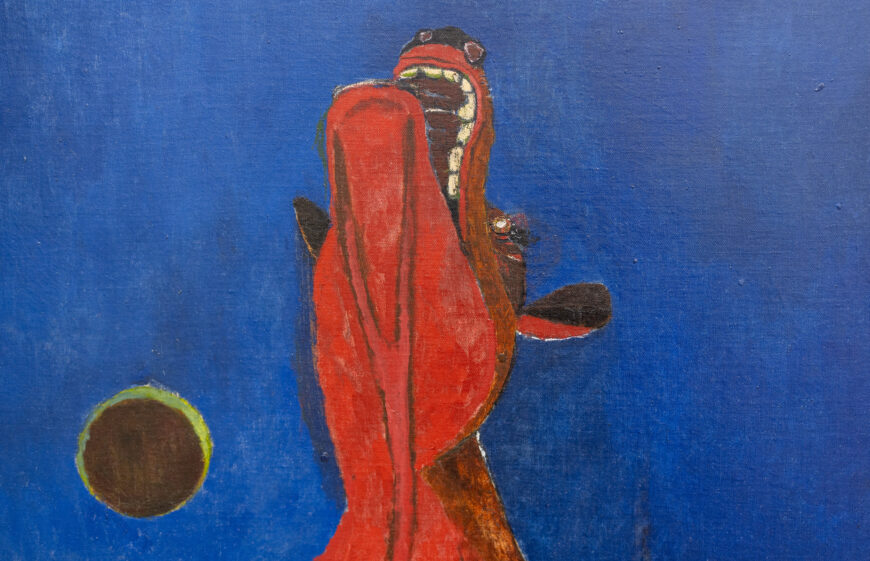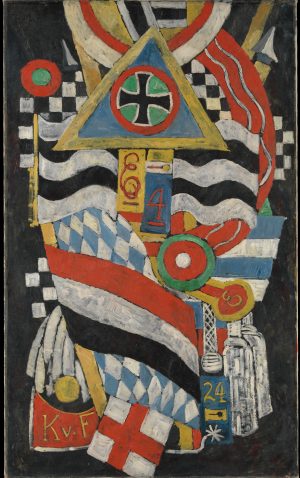
Marsden Hartley, Portrait of a German Officer, 1914, oil on canvas, 173.4 x 105.1 cm (Alfred Stieglitz Collection, The Metropolitan Museum of Art, New York)
A different kind of portrait
I once hired a photographer to take my picture for a publication. The resulting portrait accurately shows what I looked like on a morning in January 2013: wavy brown hair with a receding hairline; narrow, pale blue eyes aided by black-rimmed spectacles; a smile with a thin upper lip; broad nose; clean-shaven face. It even shows what I wore that day: dark jeans, light blue shirt, brown tweed blazer. This image is an accurate representation of my appearance, but does it tell you anything about who I am? Would it be possible for a different kind of portrait to do something else—could it instead depict aspects of my professional or personal identity rather than simply showing how I appear? If a painter filled a canvas with things that symbolize my life, could that image be just as meaningful an expression of who I am? This kind of “allegorical” or symbolic portrait was exactly what Marsden Hartley achieved in his 1914 Portrait of a German Officer, which he painted while living in Germany during the start of World War I.
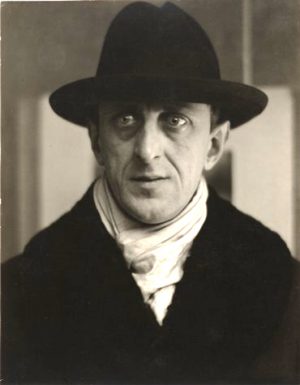
Alfred Stieglitz (photographer), portrait of Marsden Hartley, 1915-16 (San Francisco Museum of Modern Art)
New York, Paris and Berlin
Hartley was an American by birth and training: born in Maine, he moved to New York City in 1899, where he studied with the American painter William Merritt Chase and, later, at the National Academy of Design. In New York, he also met the preeminent avant-garde photographer Alfred Stieglitz, who owned and operated the prestigious 291 Gallery. Stieglitz not only gave Hartley a one-person show at the gallery, but he also introduced the 28-year-old painter to the newest trends in European modernism.
In 1912, Hartley packed his trunks and moved to Paris. There, he moved within artistic circles that included artists such as Pablo Picasso and Henri Matisse, who both influenced Hartley’s work. While in Paris, Hartley also met Arnold Rönnebeck, a German sculptor, and his cousin, Karl von Freyburg, who was then a lieutenant in the German army. He and Hartley became close, and a number of art historians have suggested that they were lovers. Hartley visited Rönnebeck and von Freyburg in Berlin in early 1913, and moved there just months later. He stayed through the start of the World War I in August 1914, and remained in Germany until December of 1915, when the war was fully and catastrophically underway. While in Germany, Hartley also met the German Expressionists Wassily Kandinsky and Franz Marc, the founders of the Blaue Reiter (Blue Rider) movement. An examination of Hartley’s paintings during his Berlin years suggests that the abstraction of Kandinsky and Marc also had a profound effect on his work.
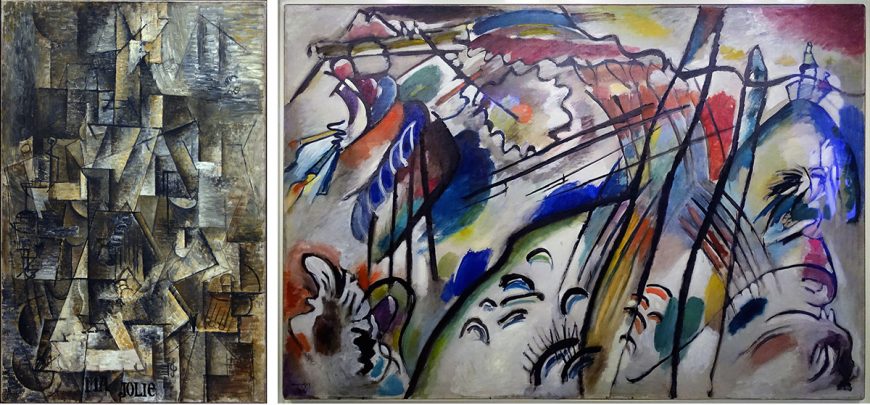
Left: Pablo Picasso, Ma Jolie, 1910-11, oil on canvas, 100 x 64.5 cm (The Museum of Modern Art, New York); right: Vasily Kandinsky, Improvisation 28 (second version), 1912, oil on canvas, 111.4 x 162.1 cm (Solomon R. Guggenheim Museum, New York)
New modes of abstraction
Portrait of a German Officer is a great example of this abstraction, and it is clear that Hartley used elements from both Picasso’s Cubism and the German Expressionists to depict not what Karl von Freyburg looked like, but a portrait that alludes to who and what he was. The painting brings together a cluster of real-world objects in a manner that emulates Cubism—the practice, pioneered by Picasso and his collaborator Georges Braque, of deconstructing three-dimensional forms and reassembling them on a two-dimensional canvas. Hartley’s use of bright hues and dynamic, linear forms in the painting also display the impact of Kandinsky, who was at the time developing a painterly language of pure form and color designed to elicit spiritual and emotional responses from the viewer. In utilizing these new modes of abstraction to depict a person, Hartley fundamentally shifted both the nature and function of the traditional portrait.
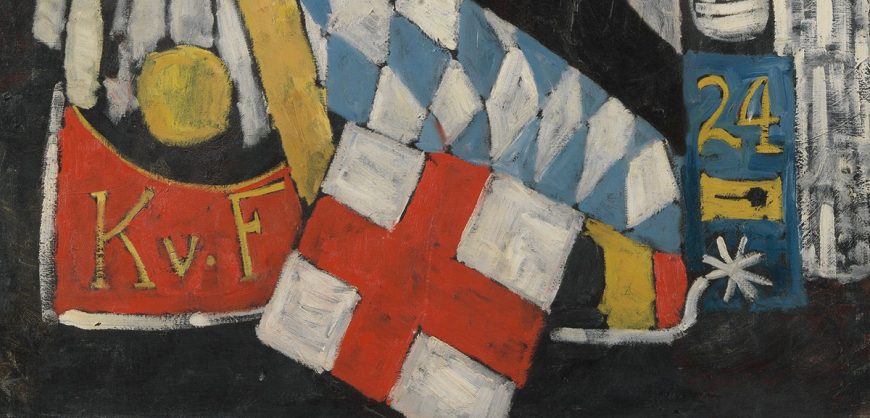
Marsden Hartley, Portrait of a German Officer (detail), 1914, oil on canvas, 173.4 x 105.1 cm (Alfred Stieglitz Collection, The Metropolitan Museum of Art, New York)
Deciphering the portrait
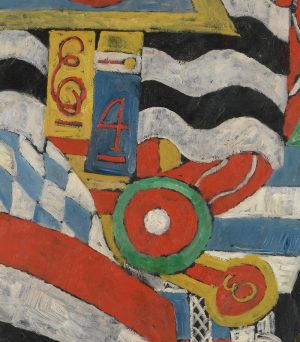
Marsden Hartley, Portrait of a German Officer (detail), 1914, oil on canvas, 173.4 x 105.1 cm (Alfred Stieglitz Collection, The Metropolitan Museum of Art, New York)
Portrait of a German Officer is also a commemorative image of von Freyburg, who had died in October 1914, an early casualty of World War I. It is a surprisingly large canvas—about the height of a human being. Hartley has filled the composition with the pomp and pageantry of the military. Von Freyburg’s initials, “Kv.F,” are included in the lower left of the painting (left). The red number four on a dark blue field (below) refers to von Freyburg’s military regiment, and the yellow “24” refers to his age at the time of his death.
The letter “E” appears twice in the composition: the red, curvilinear E on a gold background in the middle of the painting (right) is a battalion marker that refers to the Bayerische Eisenbahn, the name of von Freyburg’s railroad battalion. A second cursive E on what looks to be an epaulette in the lower right could refer to either Hartley’s birth name, Edmund, or Queen Elisabeth of Greece, the royal patron of von Freyburg’s regiment. The silver star connecting to a serpentine line near the yellow 24 is a boot spur, referring to von Freyburg’s position as a cavalry officer (above). Finally, the stylized cross with white trim (see image at top of page) is a German Iron Cross—a medal awarded to soldiers who demonstrated exceptional valor. Von Freyburg earned this medal shortly before his death. If we imagine this vertical canvas as an analog to a human figure, this decoration might be understood as being worn on the chest, suspended from a red and white striped ribbon.
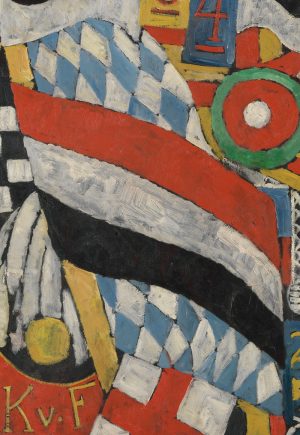
Marsden Hartley, Portrait of a German Officer (detail), 1914, oil on canvas, 173.4 x 105.1 cm (Alfred Stieglitz Collection, The Metropolitan Museum of Art, New York)
Hartley’s painting is also more than a portrait of an individual: it expresses the rising German nationalism that he witnessed while living in Berlin. The diagonal blue and white checkerboard pattern (left) is a reference to the flag of Bavaria, and so too are the pair of blue and white stripes on the right side of the image. The red, white, and black stripes on the bottom third of the canvas represent a Kriegsschiffgösch or German naval war flag, turned upside-down. This flag typically had a black cross in the middle of it, but Hartley omitted this element so as to bring compositional importance to the medal in the upper part of the painting. Beneath the German flag are the standards of two of Germany’s enemies: the red and white St. George’s Cross of England, and the black, yellow, and red tricolor of Belgium.
More than appearances
In western academic painting of the eighteenth and nineteenth centuries, veracity and naturalism (at least to the extent that they flattered the subject) were prized aspects of portraiture. The renowned early American portraitist Gilbert Stuart, for example, was said to have “nailed the face to the canvas.” Clearly, Marsden Hartley had no such interest in nailing any part of Karl von Freyburg’s body to the canvas. Instead, through the use of military and nationalistic accoutrements, Hartley created an allegorical visual ode to his friend, a portrait that says nothing about his appearance, but communicates much about who and what he was as a person.


